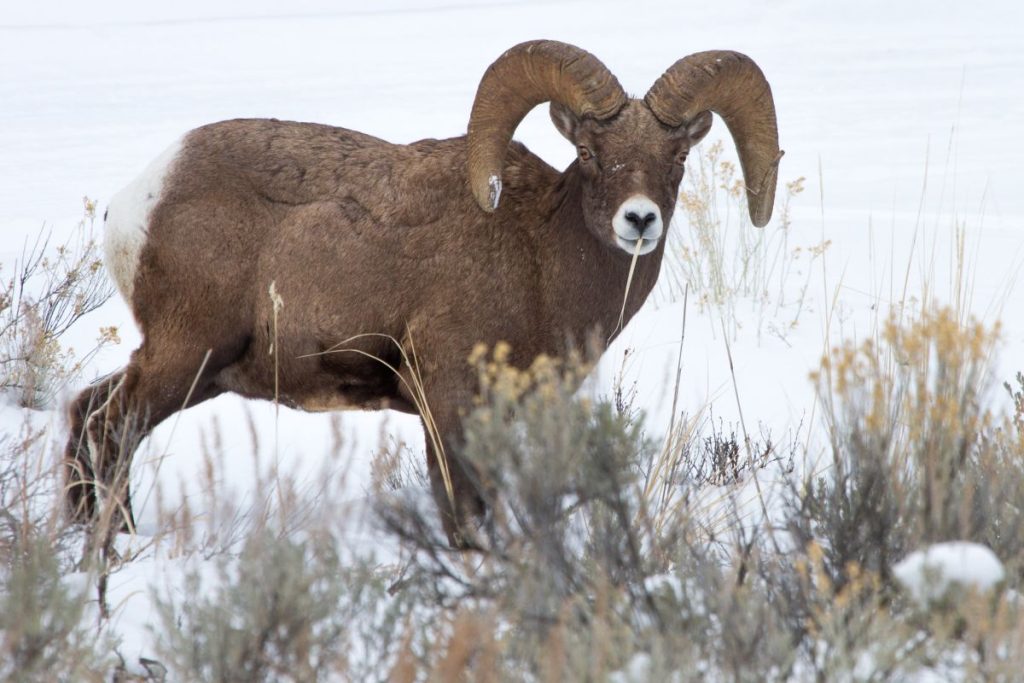Yellowstone Reports Multiple Visitor Incidents (Already) in Summer 2023
Written by Andrew-Rossi on June 5, 2023
Summer is always an “eventful” time in Yellowstone National Park, often to the amusement and dismay of locals and others with an emotional investment in the park and its preservation. But Summer 2023 feels unlike any other with the number of incidents being reported and – in many instances – caught on camera.
The May 20 incident where a man was seen dragging a bison calf out of the Lamar River (in a well-intentioned by misguided attempt to rescue it) has become the most infamous moment of the season – so far.
But that’s far from the only notable incident in the park this season.
May 13 – Woman commits suicide on Craig Pass
38-year-old Catheryn Danyelle Griffin was found dead in a vehicle crashed into a snowbank on Craig Pass, which temporarily closed the road corridor between West Thumb and Old Faithful. It’s believed that Griffin shot herself after an altercation with her boyfriend, Michael McCollum, who was arrested at the scene.
McCollum was charged with charged with drug possession and traffic violations, but has since been released from jail on bond.
May 20 – Hawaii man drags bison calf out of Lamar River
The image of Clifford Walters carrying a bison calf out of the Lamar River quickly made national news. The calf was euthanized later that day since it was following cars on the road after its herd abandoned it.
Walters pleaded guilty to one count of feeding, touching, teasing, frightening, or intentionally disturbing wildlife. He paid over $1,000 in restitution for his well-intentioned but foolhardy actions.
Memorial Day Weekend – Couple transports elk calf to West Yellowstone
During the Memorial Day weekend, visitors placed an elk calf in their car while likely driving on U.S. Highway 191 in the park and brought the newborn to the West Yellowstone, Montana, Police Department. The elk later ran off into the forest and its condition is unknown.
This incident is under investigation and there is no additional information to share.
May 26 – Grizzly sow charges vehicles after cub is struck and killed
Yellowstone Tour Guides reported an incident where a man struck and killed a one-year-old grizzly cub on U.S. Highway 191 outside Yellowstone’s boundaries in the early morning hours of May 26. The driver left the vehicle – which had been totaled as a result of the impact – and walked to the nearby Yellowstone Tour Guides office to call for a tow truck.
The mother grizzly was mock charging other vehicles in her confusion over the death of her cub. Luckily, a Yellowstone Tour Guides employee was able to intercept the driver as they walked back to their vehicle – the sow would have killed them once they returned to the scene.
May 28 – Two adult black bears struck and killed in two separate incidents
At about 5 p.m., an adult male black bear was struck and killed by a vehicle near milepost 14 on U.S. Highway 191 in the northwestern section of the park. Later that same evening, a second adult male black bear was struck and killed by a vehicle at milepost 29 on U.S. Highway 191.
Both bears were dark chocolate brown in color.
Park officials report that a bison and a elk were hit by separate vehicles “in recent days.”
These incidents are in addition to the more typical flurry of tourists disregarding boardwalks, barriers, and park regulations to get better pictures on the fragile earth next to the park’s hot springs or selfies with seemingly placid bison.
Tourons of Yellowstone – an Instagram account that chronicles flagrant violations by ignorant tourists – has shared videos of four separate incidents of people getting too close to bison within the last two weeks. One incident almost results in injury as a bison attempts to headbutt a group of women on a boardwalk.
View this profile on Instagram
Meanwhile, Yellowstone officials and the National Park Service are doing the best thing they can do in response: reminding visitors of the park’s rules and regulations and hope they exercise better judgement.
“Approaching wild animals can drastically affect their well-being and, in some cases, their survival. When an animal is near a campsite, trail, boardwalk, parking lot, on a road, or in a developed area, leave it alone and give it space.
Park regulations require that you stay at least 25 yards (23 m) away from all wildlife (including bison, elk and deer) and at least 100 yards (91 m) away from bears and wolves. Disregarding these regulations can result in fines, injury, and even death.
The safety of these animals, as well as human safety, depends on everyone using good judgment and following these simple rules.”
The N.P.S. also reminds visitors of the Yellowstone Pledge:
- Give wildlife room, use a zoom. The safest way to view wildlife is through a telephoto lens, a spotting scope, or a pair of binoculars. Park animals are wild and dangerous. Bison, bears, and elk have injured and killed people. Do not approach, encircle, follow, or feed any animal. Stay 100 yards (91 m) from bears and wolves. Stay 25 yards (23 m) from all other animals.
- Follow the beaten path. In thermal areas, boardwalks take you to amazing places, protect the park, and keep you safe. People have been severely burned and killed after leaving the boardwalk or reaching into hot water. Geysers, mud pots, and hot springs are delicate. Don’t throw anything into any hydrothermal features, touch them, or change them in any way.
- Be bear aware. Carry bear spray and know how to use it. Be alert, make noise, hike in groups, and stay on trails. If you encounter a bear, never run.
- Watch out for water. Use caution around rivers, lakes, and streams. They are cold and fast and people have died from hypothermia and drowning after accidentally falling into frigid water.
- Practice safe selfies. No picture is worth hurting yourself, others, or the park. Be aware of your surroundings whether near wildlife, thermal areas, roads, or steep cliffs.
- Enjoy the ride. Drive defensively and cautiously. This park has hazards on the road you aren’t used to at home (like 2,000-lb. bison). Follow speed limits and stay with your car if you’re stuck in a wildlife jam. When you want to take a photo or look around, use pullouts to avoid blocking traffic and damaging vegetation. Turn off your vehicle when stopped in a traffic line.
- Leave your drone at home. Drones are not allowed in Yellowstone National Park. They disturb wildlife, interfere with park operations, and bother people trying to enjoy natural sounds.
- Clean, Drain, Dry. Help us prevent the spread of aquatic invasive species. Clean, drain, and dry your watercraft and fishing gear before you come into the park or move from one body of water to another.
- Stash your trash. Recycle what you can and put the rest in bear-resistant trash cans so animals can’t get to it. If a can happens to be full, find another.
- Leave what you find. Don’t take antlers, artifacts, rocks, plants, or other objects from the park.

